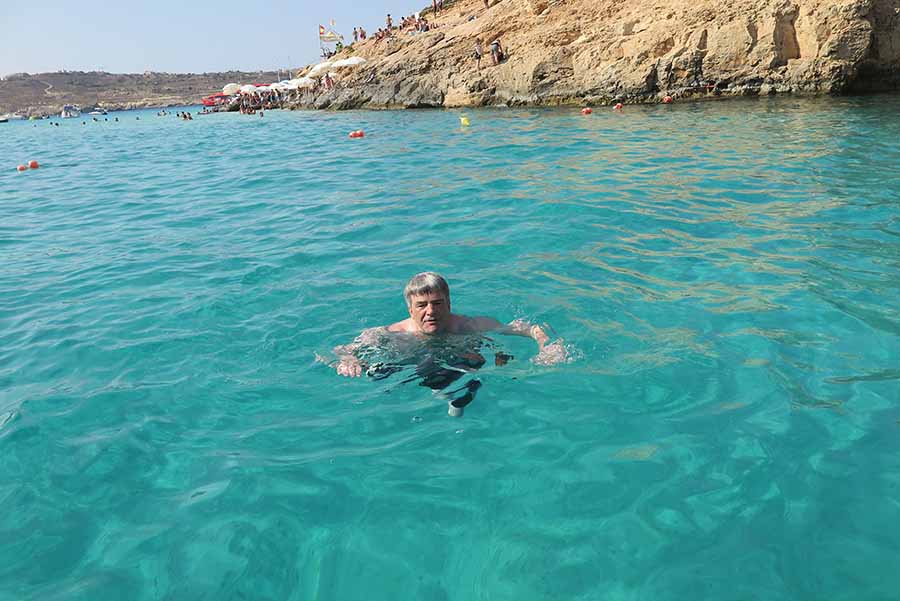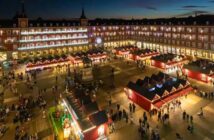
Malta, a Mediterranean archipelago, is a vibrant destination blending over 7,000 years of history, stunning coastlines, and a lively cultural scene. With a population of around 557,750 (2024 estimate) and a compact size of 316 km².
- Valletta, the Capital: A UNESCO World Heritage Site, Valletta’s 16th-century streets are a living museum of Baroque architecture. St. John’s Co-Cathedral, with its gilded interiors and Caravaggio’s The Beheading of St. John, is a highlight, drawing history and art enthusiasts. The Upper and Lower Barrakka Gardens offer panoramic Grand Harbour views, with daily cannon salutes at noon and 4 PM. Fort St. Elmo and the National War Museum narrate Malta’s WWII resilience.
- Mdina, the Silent City: This fortified medieval town, 13 km from Valletta, features narrow alleys, St. Paul’s Cathedral, and panoramic island views. Its serene ambiance, enhanced by horse-drawn carriage rides, makes it a must-visit, though it can get crowded during peak times.
- Ġgantija Temples (Gozo): These 5,500-year-old Neolithic temples on Gozo, a UNESCO World Heritage Site, predate Stonehenge. Visitors explore megalithic structures and a museum showcasing artifacts, offering insights into Malta’s prehistoric past.
- Ħal-Saflieni Hypogeum (Paola): A unique underground prehistoric temple, this UNESCO site features rock-cut chambers from 3600–2500 BCE. Limited to 80 visitors daily, it requires booking weeks in advance, offering a rare glimpse into ancient rituals.
- Cultural Experiences: Malta’s 359 churches reflect its 90% Catholic population, with vibrant village festas (May–September) featuring fireworks, processions, and street food like pastizzi (savory pastries). Għana music, a traditional folk chant, can be heard at events like Għanafest in May. The Valletta Baroque Festival (January) showcases operas in historic venues.
Natural Beauty and Beaches:
- Blue Lagoon (Comino): This turquoise lagoon between Malta and Gozo is a snorkeling and swimming paradise, though it’s crowded in summer. Its crystal waters and rocky shores are ideal for day trips via ferry or boat tours.
- Mellieħa Bay (Għadira Bay): Malta’s longest sandy beach, it offers cafes, water sports, and a lively summer scene, transforming into a tranquil spot for winter strolls with Red Tower views.
- Blue Grotto (Żurrieq): A series of sea caves with brilliant blue waters, accessible by 30-minute boat trips. The caves’ reflections and 30m-high arch are best seen on sunny days.
- Dingli Cliffs: These dramatic cliffs on Malta’s west coast offer sunset views and coastal hiking trails, showcasing the island’s rugged natural beauty.
- Diving and Water Sports: With 120+ dive sites, including WWII wrecks like the HMS Maori, Malta is a diver’s haven. Gozo and Comino offer quieter beaches for snorkeling, while northern bays like Golden Bay host water sports.
Culinary and Urban Experiences:
- Food Scene: Malta’s cuisine blends Italian, North African, and British influences. Must-try dishes include rabbit stew, pastizzi, and fresh seafood at Marsaxlokk’s fish restaurants. Valletta’s Michelin-starred restaurants, like those in 17th-century palazzos, elevate dining, while street food tours explore local specialties.
- Vibrant Cities: Valletta’s nightlife spills into narrow streets, with trendy bars and clubs. St. Julian’s Bay offers romantic dining and ice cream strolls. Qawra and Bugibba in the northwest are nightlife hubs with bars and restaurants near Salina Bay.
- Markets and Crafts: Marsaxlokk’s daily market sells lace and linens, while Gozo’s villages offer salt from 350-year-old pans and local produce.
Festivals and Events:
- Carnival (February): A 500-year tradition with parades, masked balls, and masquerade competitions, held the week before Ash Wednesday.
- Malta Fireworks Festival (April–May): Two weeks of dazzling displays and competitions over Grand Harbour.
- Malta International Airshow (September): Aerobatic performances light up the skies, thrilling aviation fans.
- Malta Classic (October): A grand prix of classic cars racing around Mdina’s winding roads, a draw for motorsport enthusiasts.
Accessibility and Climate:
- Getting Around: Malta’s public bus system is affordable and covers major sites, though renting a car or moped aids exploration, especially for remote spots like St. Peter’s Pool. Ferries connect Malta, Gozo, and Comino in 20–30 minutes.
- Climate: With 300 sunny days annually, Malta’s Mediterranean climate offers hot summers (25–30°C) and mild winters (10–15°C). Spring (April–June) and autumn (September–October) are ideal for sightseeing, with fewer crowds and pleasant weather.
- Language: English and Maltese are official languages, making communication easy for English-speaking visitors.
What’s New for 2025 in Malta
- Blue Lagoon Booking System (Comino): Malta introduced a booking system for Blue Lagoon visits in 2025. Visitors receive wristbands for specific time slots, ensuring controlled access and a better experience. This aligns with sustainable tourism goals under SDG 12. Expect a less crowded lagoon, but book early, especially in summer, as slots are limited. This enhances environmental preservation and visitor enjoyment.
- Drone Fireworks at Grand Harbour: For the first time, Malta launched fireworks from drones above Grand Harbour on May 1, 2025, creating a synchronized spectacle. This innovative display, highlighted by locals, may become a recurring feature at 2025 festivals, enhancing events like the Fireworks Festival. Visitors can anticipate cutting-edge entertainment, with drone shows adding a modern twist to Malta’s traditional festivities.
- Għanafest (May 2025): This folk music festival grows in popularity, offering more live performances in rural villages, celebrating Maltese traditions.
- Malta International Airshow (September 2025): Enhanced with new aerobatic teams, this event aims to draw larger crowds, boosting aviation tourism.
- Malta Classic (October 2025): The classic car grand prix in Mdina introduces new routes and vintage car displays, appealing to motorsport fans.
- The Malta Pass for 2025 offers free entry to over 30 attractions, including Hagar Qim, Fort St. Angelo, and Valletta Living History, with a 50% discount for 1, 2, or 3-day options. Delivery is now streamlined to hotels, improving convenience.
- The Malta Tourism Authority is promoting medical tourism to Irish visitors and diversifying cultural offerings, aiming for higher-spending tourists. This includes new guided tours of lesser-known sites like Rabat’s Roman Villa.
- BirdPark Malta (Salina): Newly opened to the public, this park promotes marine and avian conservation, offering educational tours and eco-friendly activities.
- Malta National Aquarium in Qawra expands its environmental programmes, with new exhibits on marine preservation and interactive family activities.
- Gozo promotes rural hiking and sustainable produce, with new trails and farm-to-table experiences to reduce environmental impact.
Practical Tips for Visitors
When to Visit: Spring (April–June) and autumn (September–October) offer warm weather (20–25°C), fewer crowds, and lower accommodation costs. Summer (July–August) is ideal for beaches but hot and busy. Winter (January–February) is mild (13–16°C), perfect for cultural sites with fewer queues.
Getting Around: Buses connect major attractions, with the Tallinja app for schedules. Ferries to Gozo and Comino are quick and affordable. Renting a car is recommended for flexibility, especially for Dingli Cliffs or Gozo’s rural areas.
Accommodations: Options range from luxury hotels like Hilton Malta to boutique stays like Palazzo Bettina in Birgu or budget-friendly B&Bs in Gozo. Book early for summer, but winter offers last-minute deals.
Visitor Resources: Visitmalta.com provides event calendars, the 2025 Travel Guide, and booking tools. The Malta Pass saves on attraction costs.
Safety and Etiquette: Malta’s sea can be rough during storms; follow local advice on swimming. Respect Catholic traditions during festas, and book Hypogeum and Blue Lagoon visits early. Travel insurance is recommended.
Health: EU visitors with an EHIC card receive free or reduced-cost healthcare. Others should have travel insurance. Pharmacists offer over-the-counter advice.
In 2025, Malta offers a captivating blend of ancient temples, Baroque grandeur, and turquoise shores, elevated by sustainable initiatives like the Blue Lagoon system and modern spectacles like drone fireworks. Whether wandering Mdina’s silent streets, diving into Valletta’s history, or soaking in Comino’s lagoon, visitors will find a compact yet dynamic destination.
- Aer Lingus and Ryanair both fly direct from Dublin to Malta. Ryanair also flies from Belfast and Shannon while Jet2 flies from Belfast. Visitmalta.com offers trail maps and event updates.




